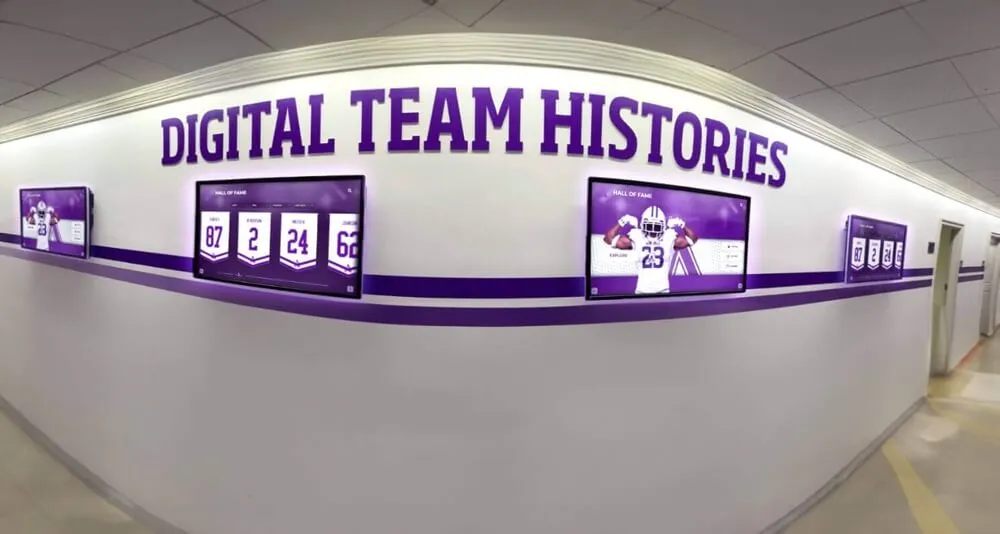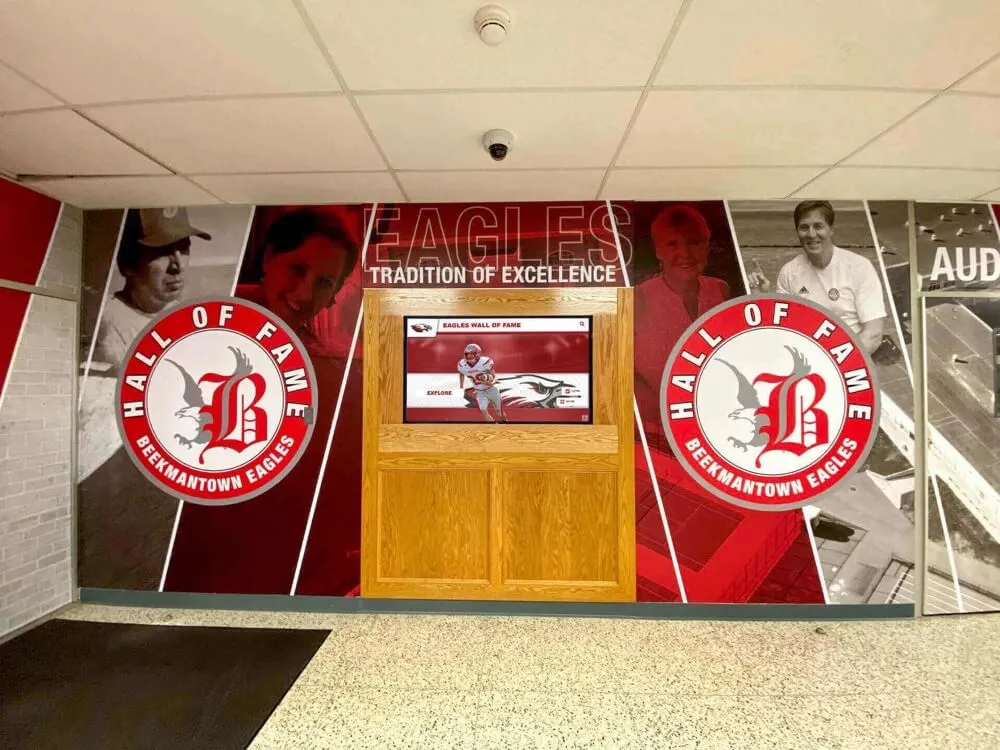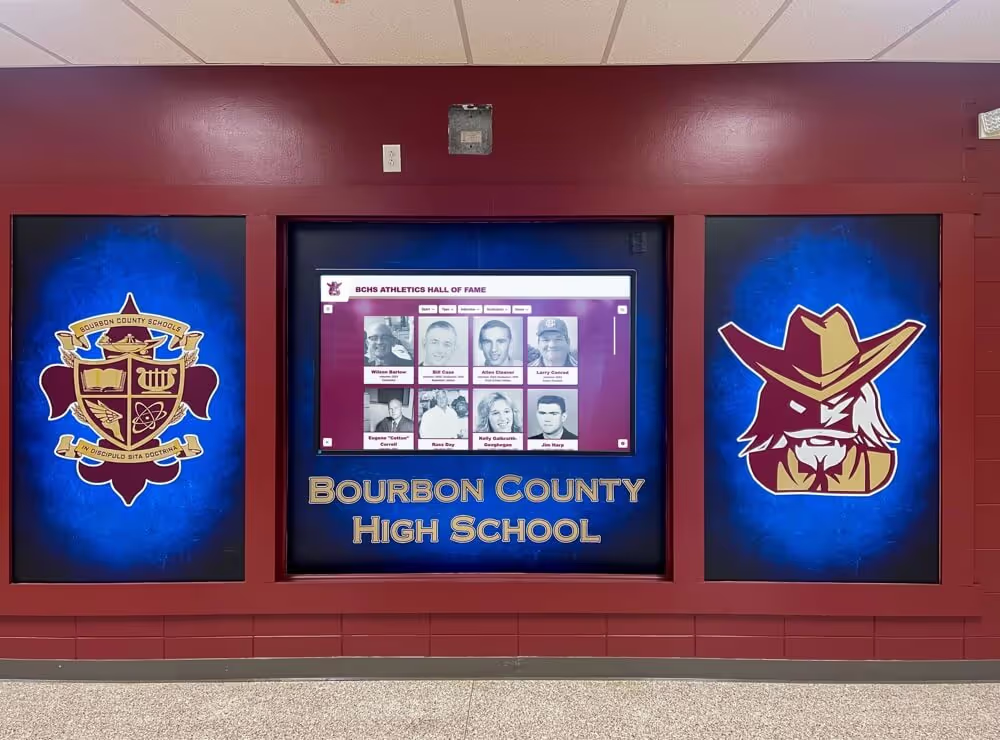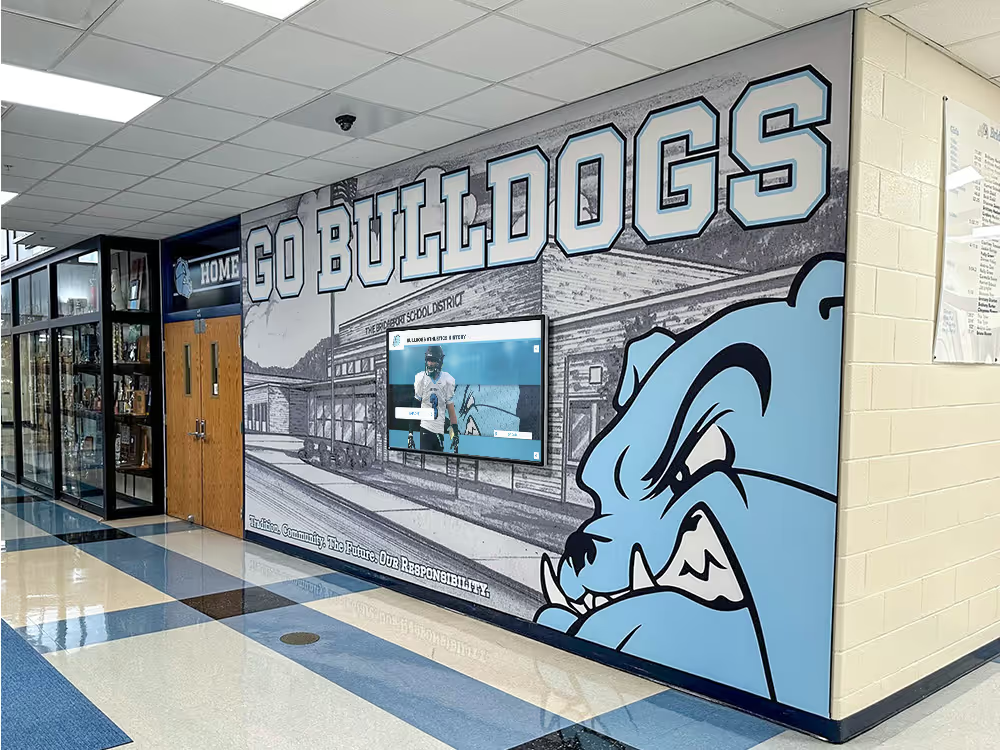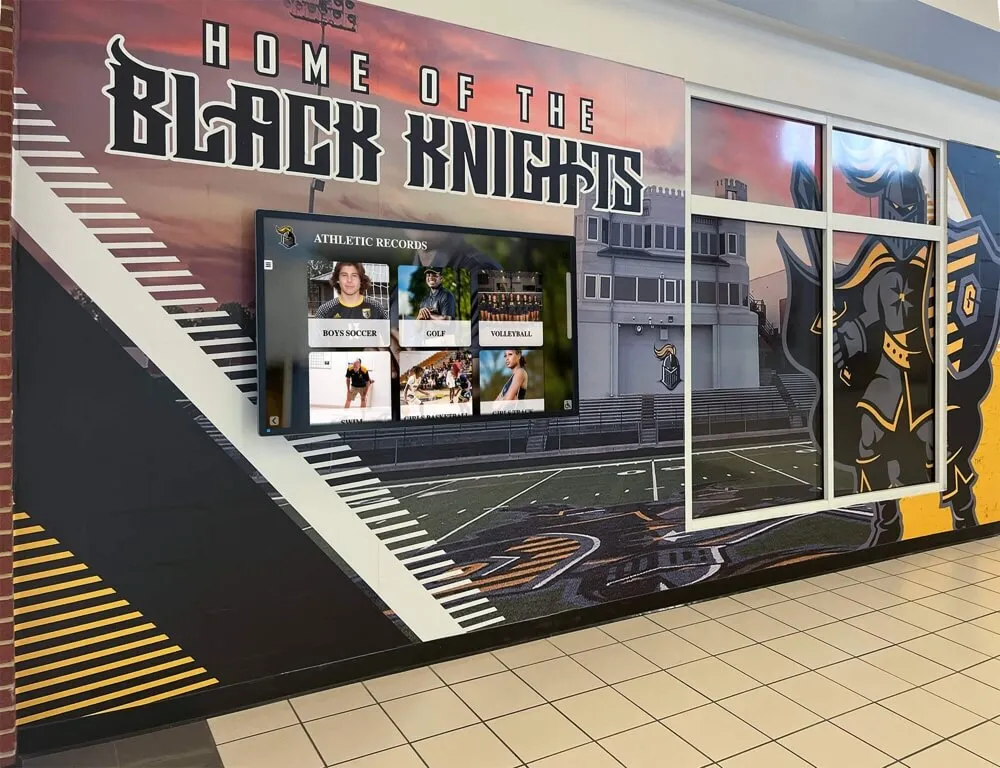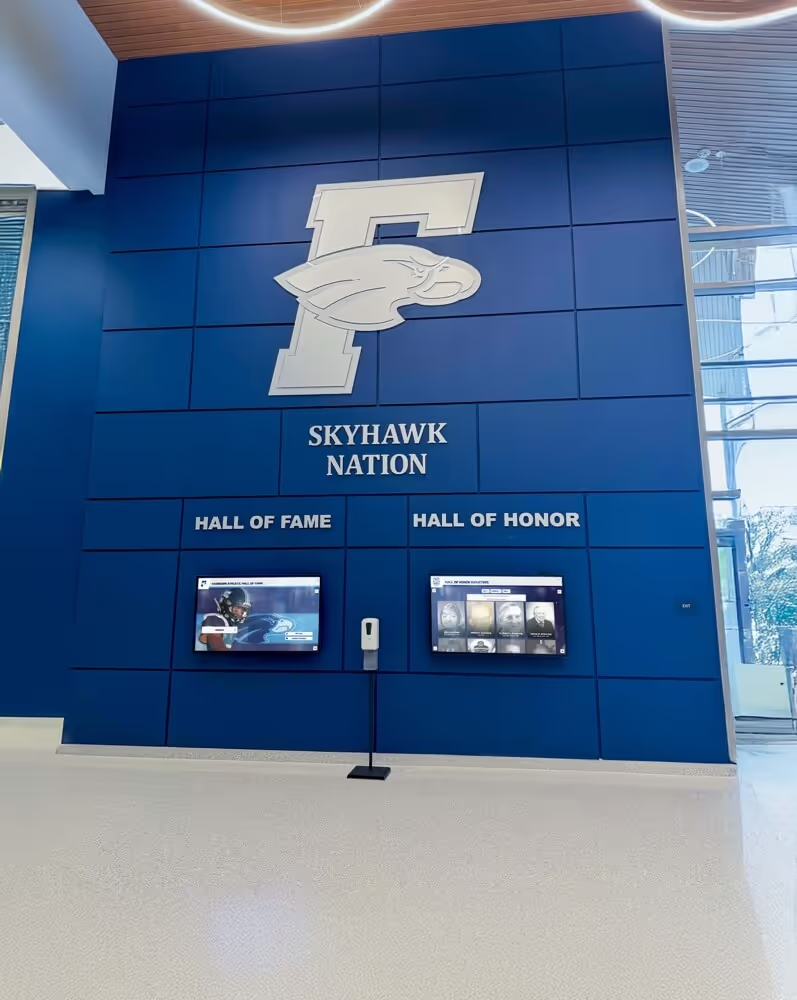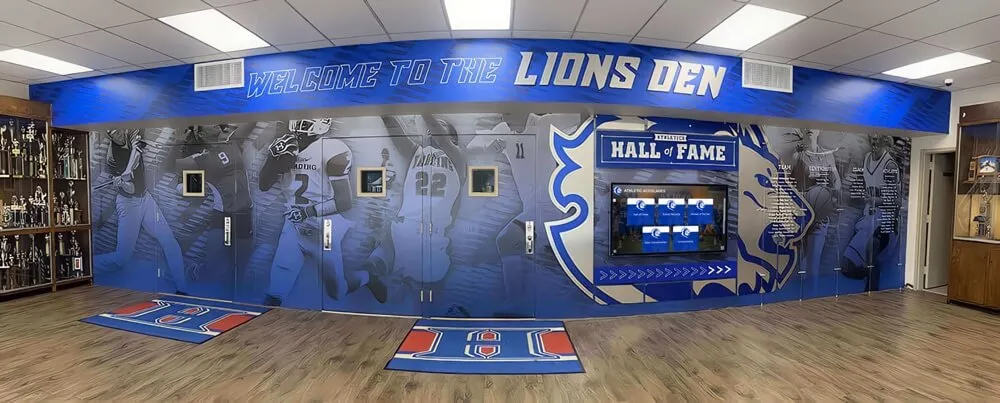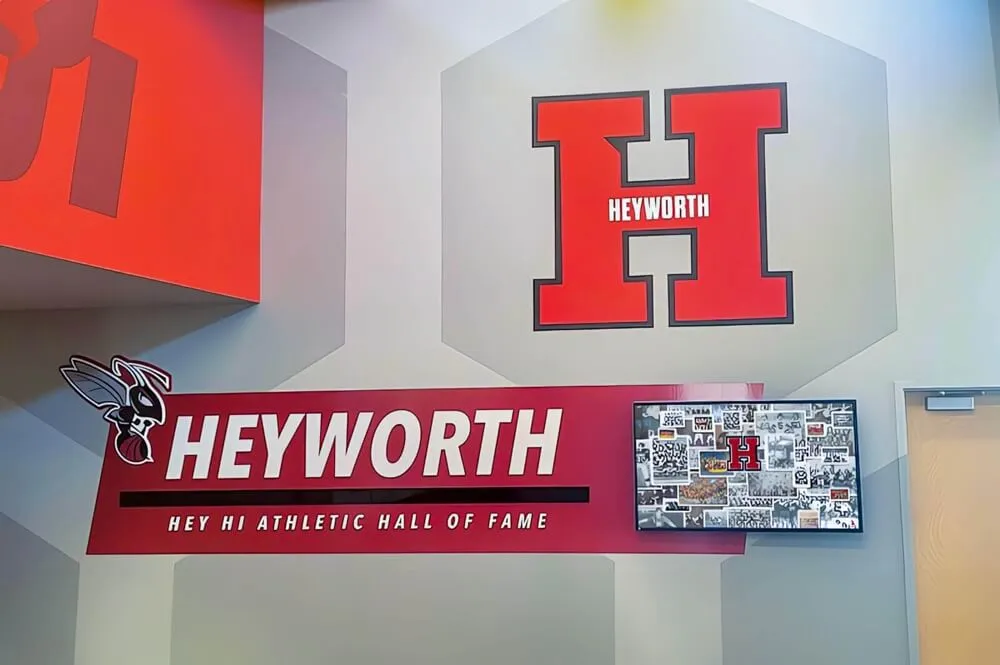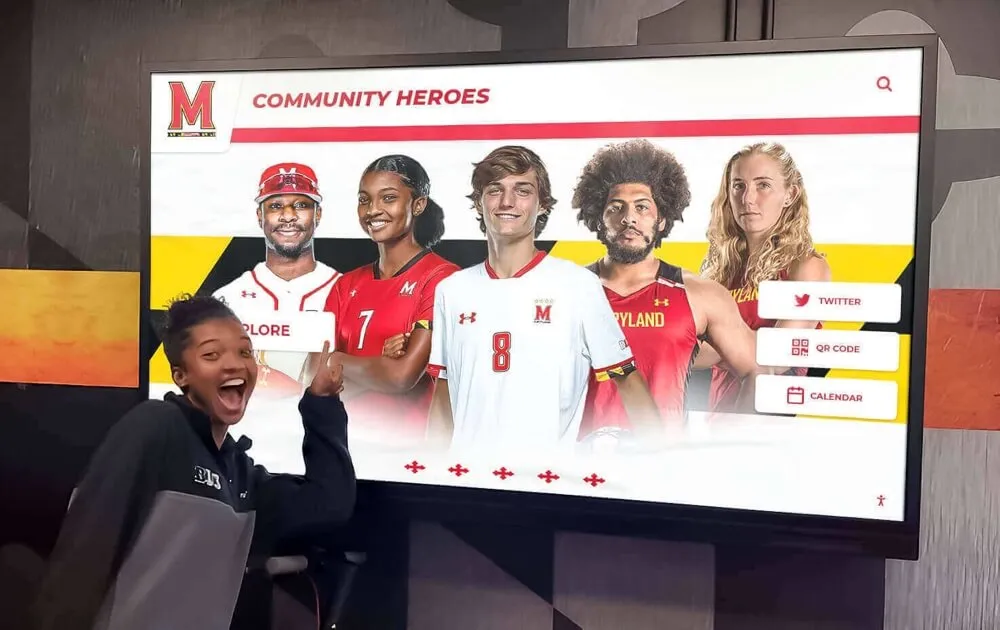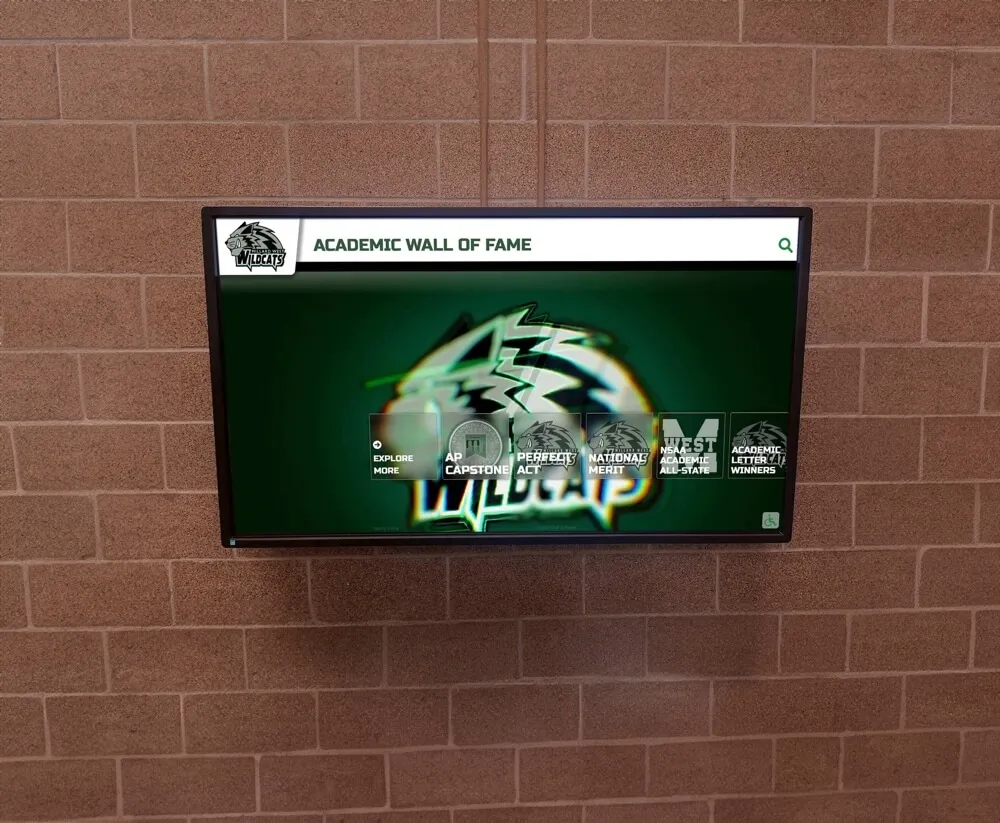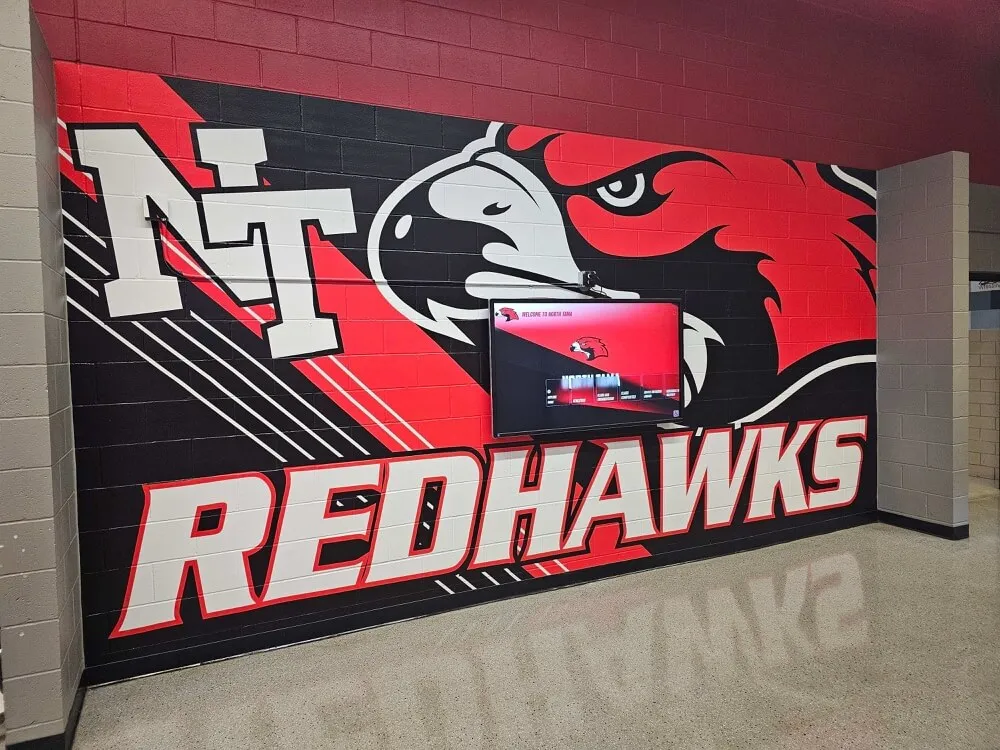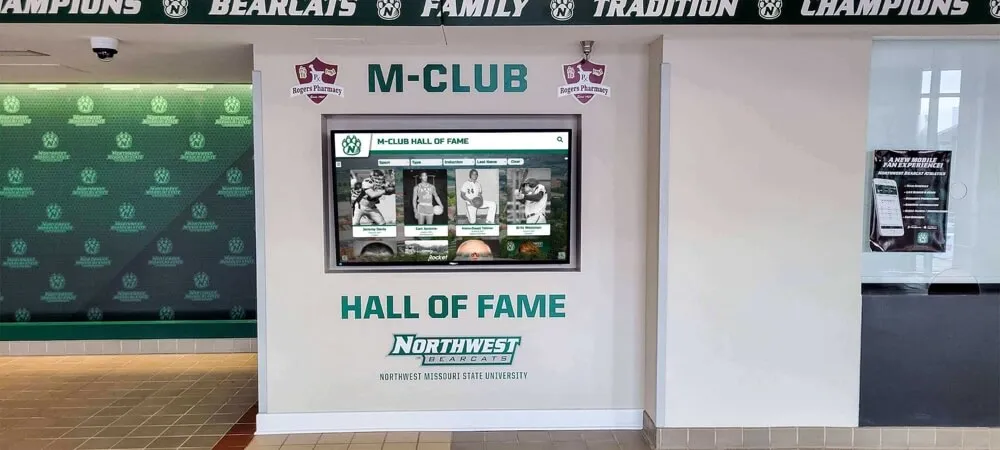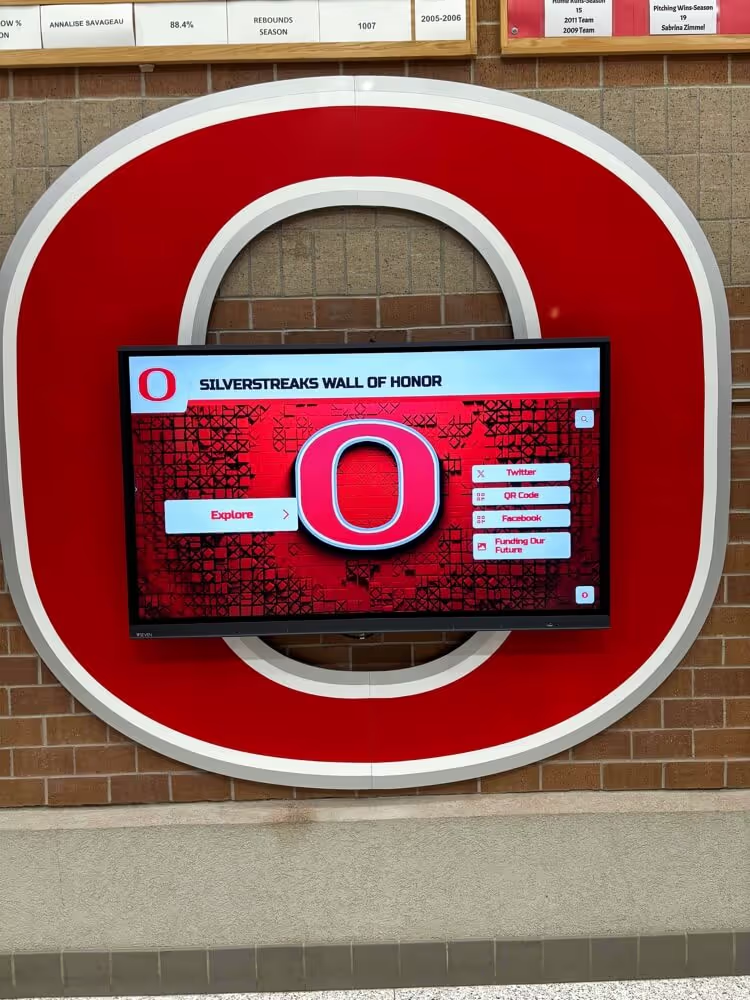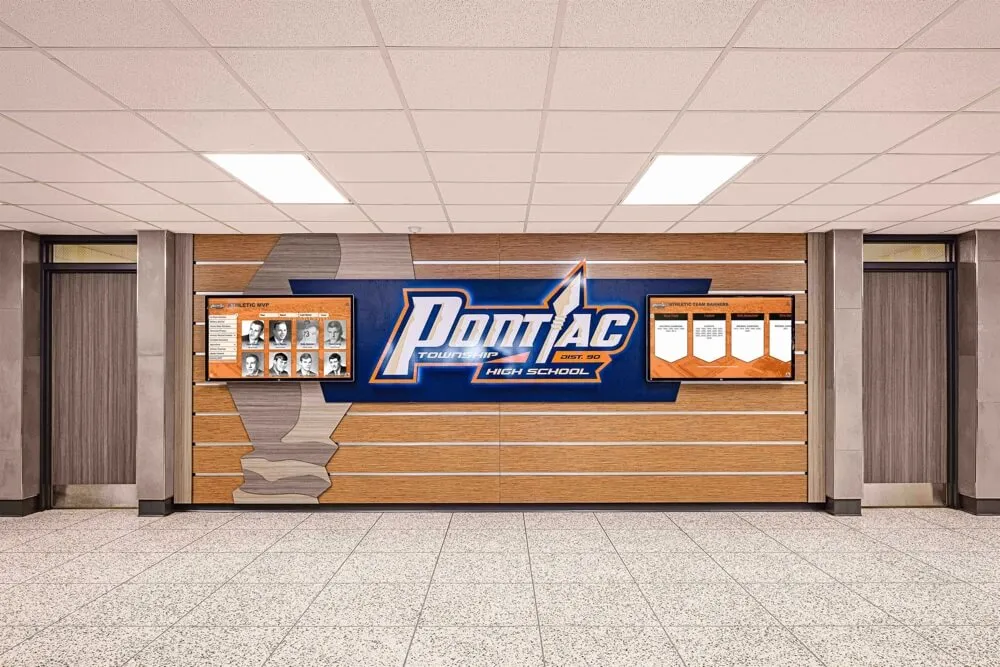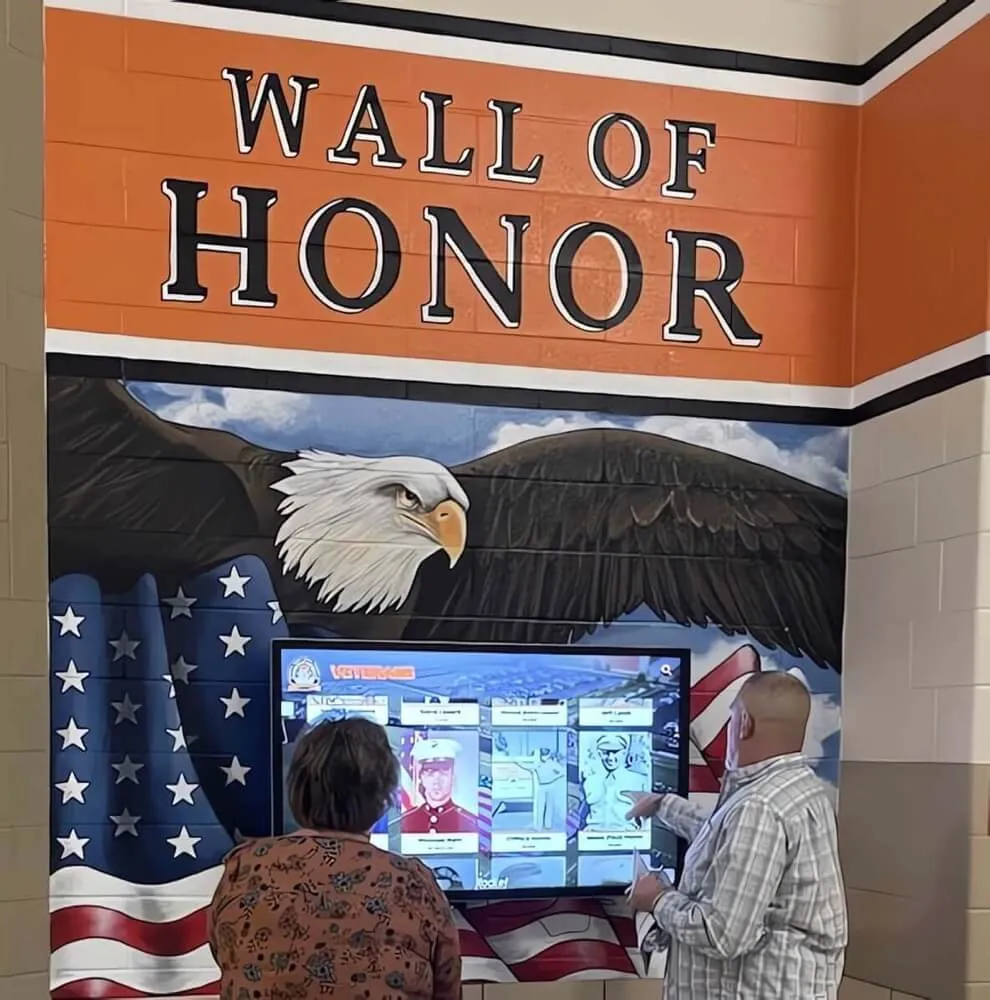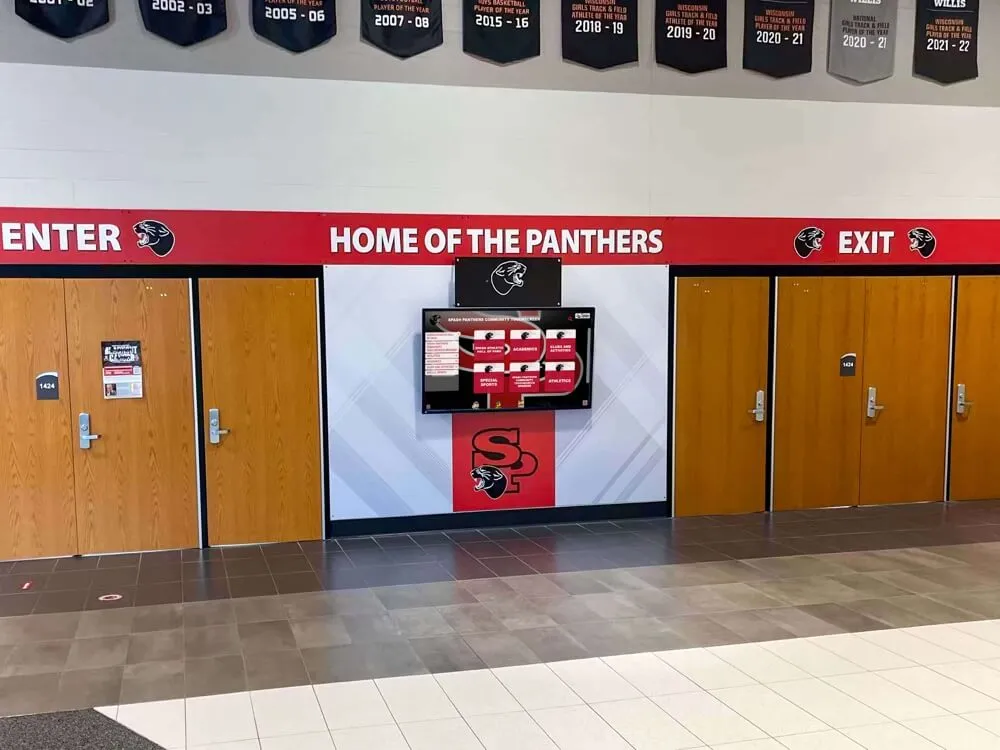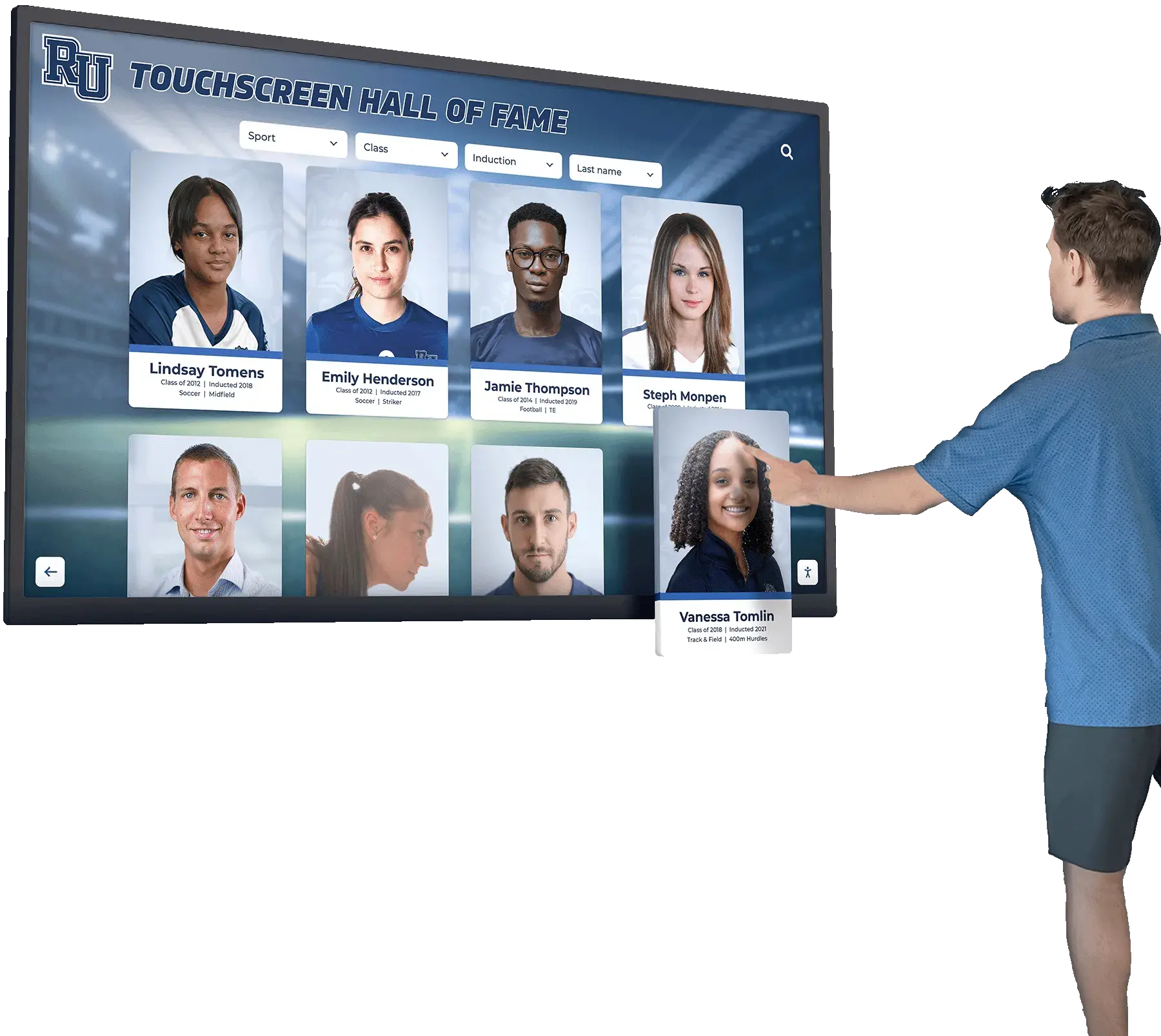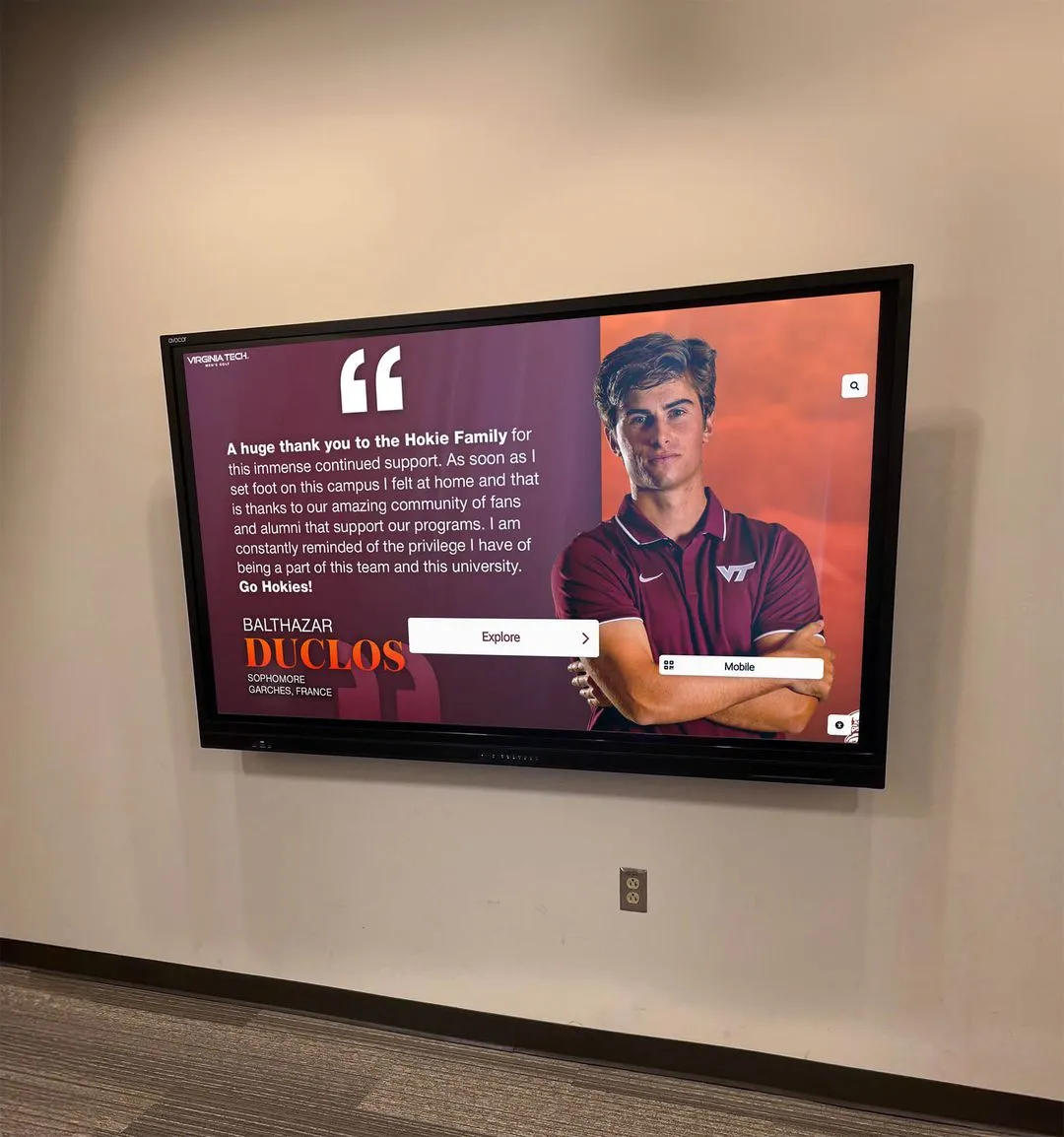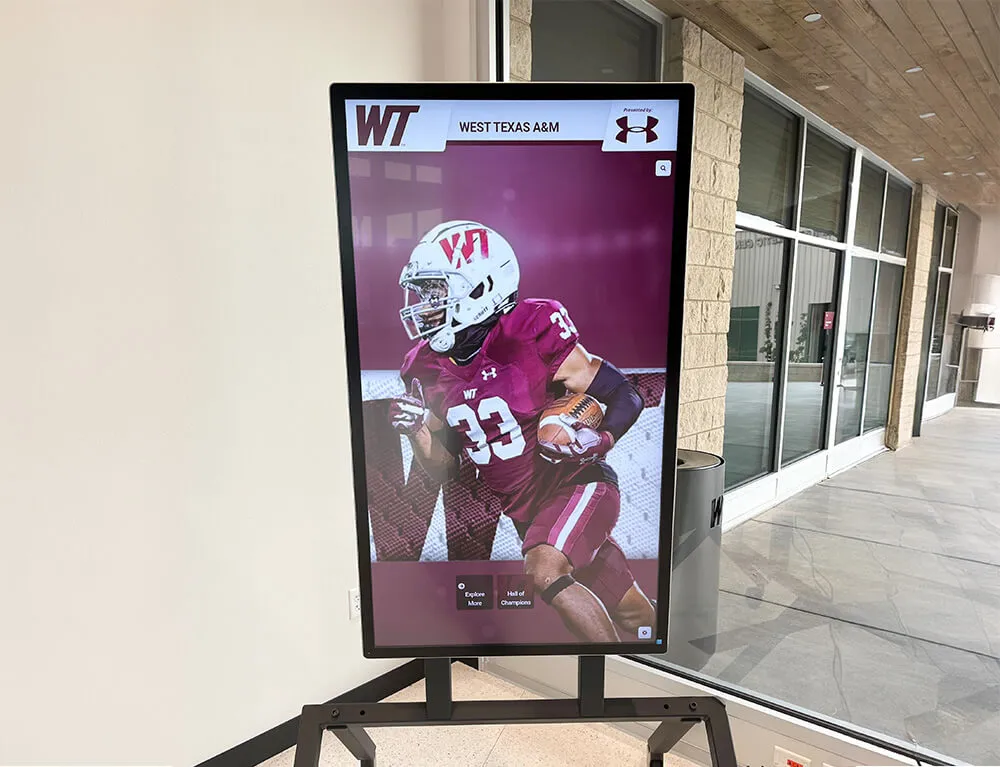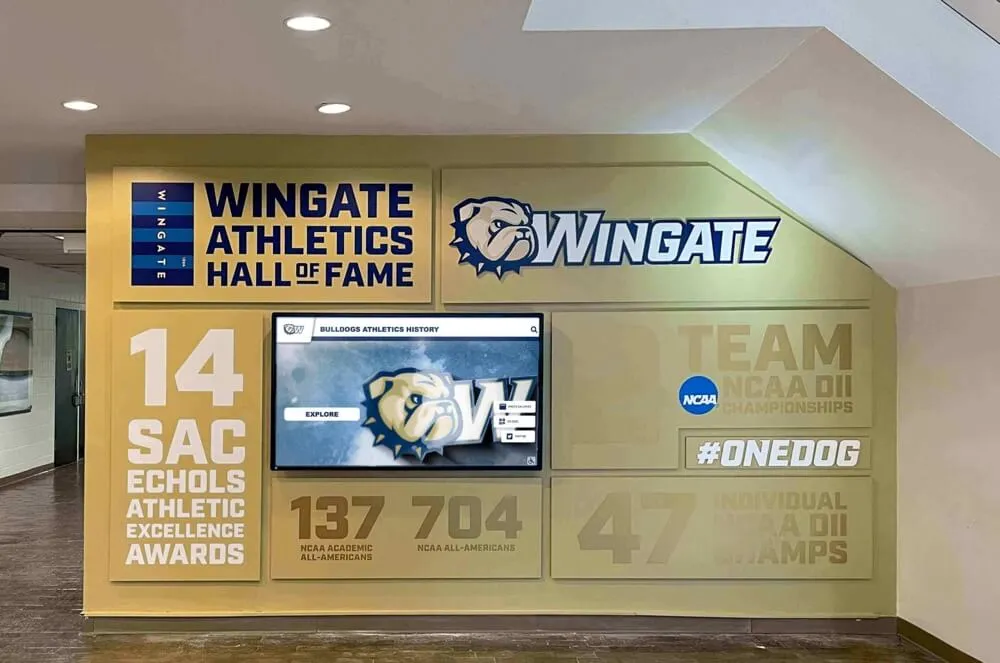Table of Contents
- Strategic Planning for Sports Halls of Fame
- Space Design and Layout Principles
- Display Technology and Content Strategy
- Visitor Experience and Engagement
- Implementation Timeline and Budget Planning
- Maintenance and Future Evolution
Strategic Planning for Sports Halls of Fame
Sports hall of fame design requires comprehensive strategic planning that balances historical preservation with modern engagement, creating spaces that honor athletic achievement while inspiring future generations.
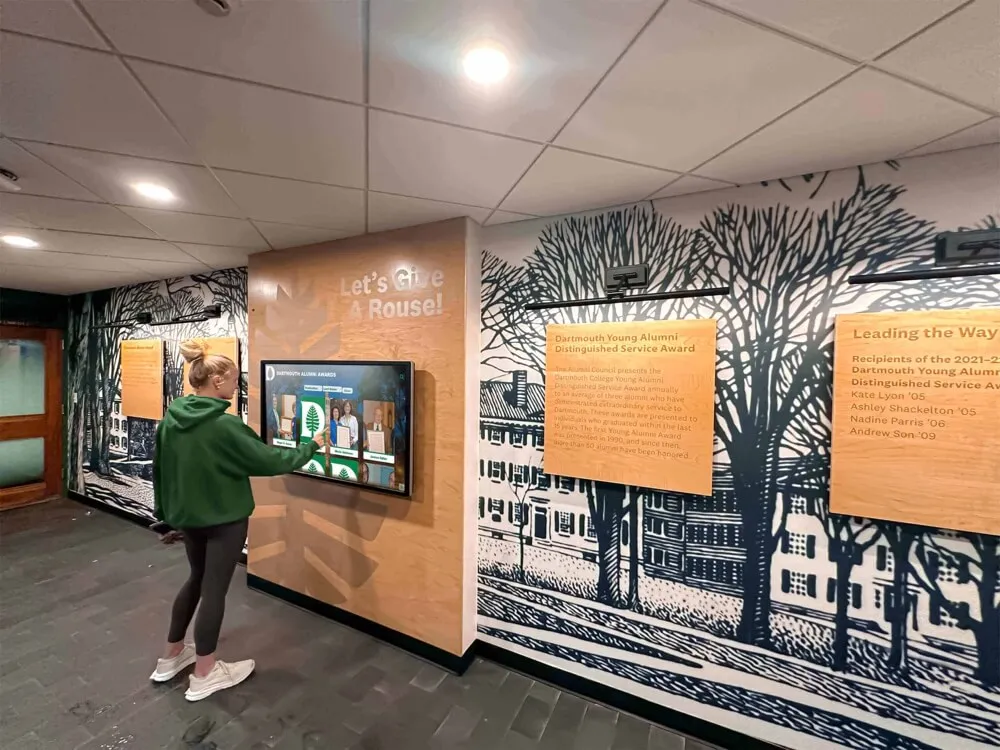
Modern sports halls of fame blend traditional recognition with interactive technology for comprehensive storytelling
The creation of a sports hall of fame represents one of the most significant investments an athletic program can make in preserving legacy and building culture. Unlike simple record boards or trophy cases, halls of fame serve as comprehensive storytelling environments that connect past achievements with future aspirations. Modern solutions from providers like Rocket Alumni Solutions enable institutions to create dynamic recognition spaces that evolve with their programs while maintaining the reverence traditional halls of fame deserve.
Defining Purpose and Scope
Essential considerations for hall of fame planning:
- 🎯Mission Clarity
Define whether the hall celebrates individual achievements, team success, program history, or comprehensive athletic excellence across all sports.
- 📊Scope Determination
Establish inclusion criteria, time periods covered, and categories of recognition to ensure consistent and meaningful selection processes.
- 👥Stakeholder Engagement
Involve alumni, current athletes, coaches, and community members in planning to ensure broad support and authentic representation.
- 🔮Future Vision
Plan for growth and evolution, considering how the hall will adapt to new achievements, technologies, and changing program needs.
Recognition Categories and Criteria
Comprehensive framework for athletic hall of fame inclusion:
Individual Recognition
- Athletic Achievement: Records, championships, All-American status
- Academic Excellence: Scholar-athlete awards, academic All-Americans
- Character Leadership: Sportsmanship, community service, team captaincy
- Professional Success: Post-graduation athletic or career achievements
- Program Impact: Lasting influence on team culture and tradition
Team and Program Recognition
- Championship Teams: Conference, regional, and national titles
- Historic Seasons: Undefeated records, breakthrough achievements
- Coaching Excellence: Long-term success, program building
- Milestone Moments: First championships, anniversary celebrations
- Cultural Impact: Teams that transformed program identity
Space Design and Layout Principles
Effective hall of fame design creates immersive environments that guide visitors through athletic history while providing flexible spaces for ceremonies, gatherings, and ongoing recognition.
Spatial Planning Considerations
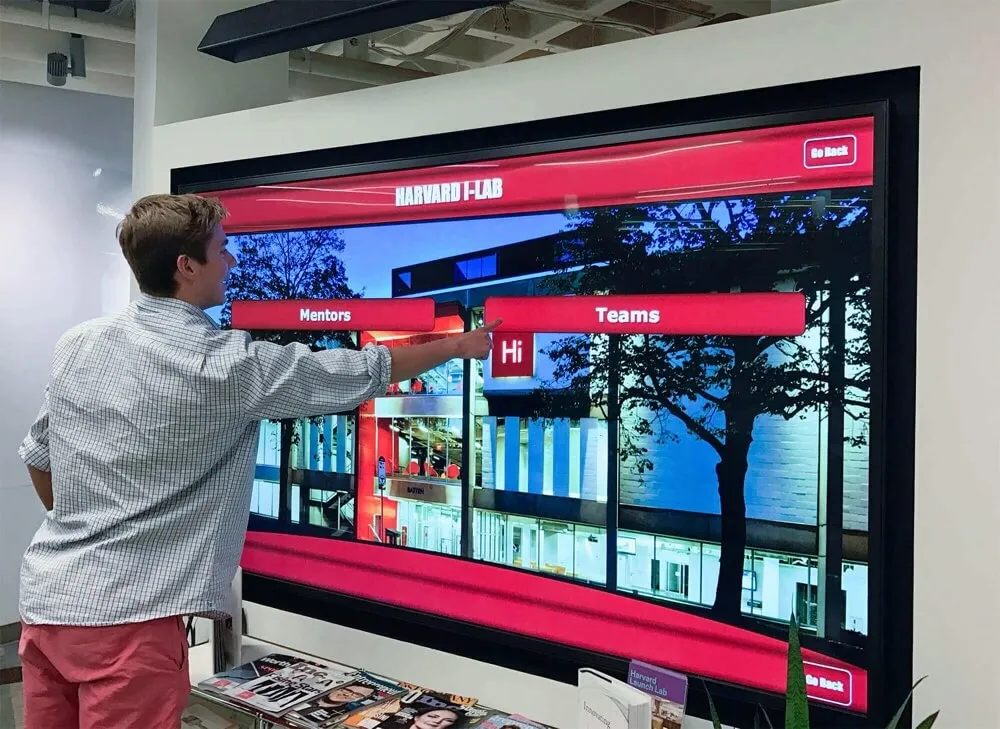
Strategic space planning ensures optimal visitor flow and display visibility
Critical elements of sports hall of fame layout:
- Entry Experience
Create impressive first impressions with signature displays, mission statements, and orientation materials - Traffic Flow
Design intuitive pathways that guide visitors through chronological or thematic progressions - Viewing Zones
Establish comfortable distances for reading, viewing multimedia, and group gatherings - Flexible Spaces
Include areas adaptable for ceremonies, receptions, and special events
Design Themes and Aesthetics
Creating cohesive athletic recognition environments:
Hall of Fame Design Approaches
Traditional Elegance
- • Rich wood finishes
- • Brass accents
- • Classic typography
- • Formal lighting
- • Timeless materials
Modern Athletic
- • Clean lines
- • School colors
- • Contemporary fonts
- • LED lighting
- • Metal and glass
Interactive Innovation
- • Digital integration
- • Touchscreen displays
- • Multimedia zones
- • Adaptive lighting
- • Technology focus
Display Technology and Content Strategy
Modern hall of fame displays combine traditional recognition elements with cutting-edge technology to create engaging, informative, and emotionally resonant experiences.
Traditional Display Elements
Foundation components of sports recognition:
Plaques and Nameplates
Permanent recognition for inductees
- Bronze or aluminum construction
- Consistent design standards
- Essential biographical data
- Achievement highlights
Trophy and Artifact Cases
Physical memorabilia display
- Climate-controlled environments
- Security considerations
- Proper lighting design
- Rotation capabilities
Photography Displays
Visual storytelling through images
- Professional mounting
- Archival quality prints
- Contextual information
- Chronological organization
Digital Integration Solutions
Advanced technology from Rocket Alumni Solutions enhances traditional displays:

Digital displays complement traditional elements while providing unlimited content capacity
Key features of digital hall of fame systems:
- Interactive Biographies: Comprehensive athlete profiles with statistics, achievements, and personal stories
- Video Integration: Game highlights, interviews, and ceremony footage bringing history to life
- Search and Filter: Visitors can explore by sport, era, achievement type, or personal connection
- Social Sharing: Enable visitors to share favorite stories and memories across platforms
Visitor Experience and Engagement
Successful sports halls of fame create emotional connections through thoughtful visitor experience design that accommodates diverse audiences and engagement preferences.
Audience Considerations
Designing for multiple hall of fame visitors:
Primary Audiences
- Alumni: Seeking personal connections and nostalgia
- Current Students: Learning program history and inspiration
- Prospective Athletes: Understanding tradition and excellence
- Families: Sharing pride and creating memories
- Community Members: Celebrating local athletic achievement
Engagement Strategies
- Self-Guided Tours: Clear signage and logical flow
- Interactive Elements: Touchscreens and multimedia
- Group Accommodations: Spaces for team visits
- Accessibility Features: Universal design principles
- Educational Components: Historical context and lessons
Storytelling and Narrative Structure
Creating compelling athletic heritage narratives:
- 📖Chronological Journey
Guide visitors through program evolution from founding to present day, highlighting key milestones and transformative moments.
- 🏆Achievement Celebration
Showcase individual and team accomplishments with context about their significance and lasting impact on the program.
- 💫Personal Stories
Include human interest elements that reveal character, perseverance, and the transformative power of athletic participation.
Implementation Timeline and Budget Planning
Successful hall of fame projects require careful project management, realistic budgeting, and phased implementation strategies that allow for quality execution within resource constraints.
Project Phases and Timeline
Structured approach to hall of fame development:
Hall of Fame Implementation Timeline
Phase 1: Planning
Months 1-3
- • Stakeholder meetings
- • Criteria development
- • Space assessment
- • Budget planning
Phase 2: Design
Months 4-6
- • Concept development
- • Technology selection
- • Content strategy
- • Vendor selection
Phase 3: Production
Months 7-10
- • Content creation
- • Display fabrication
- • Technology setup
- • Quality testing
Phase 4: Launch
Months 11-12
- • Installation
- • Staff training
- • Dedication ceremony
- • Public opening
Budget Considerations
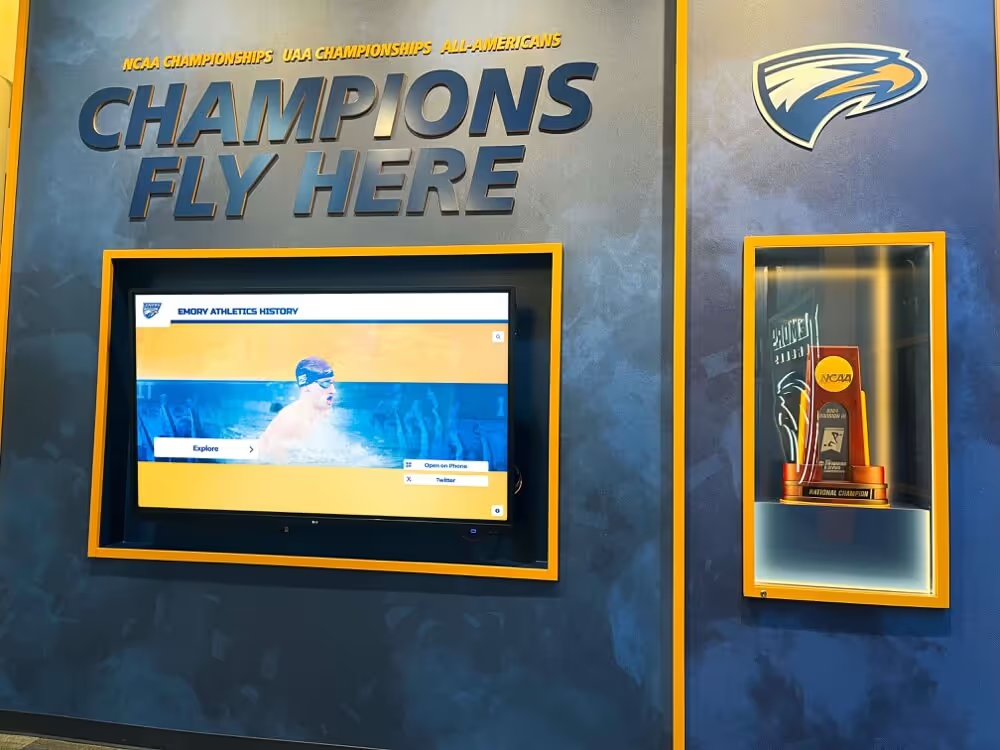
Comprehensive budget planning ensures successful project completion within financial constraints
Investment categories for hall of fame budgets:
Traditional Elements
- • Space renovation: $15,000-50,000
- • Display cases: $5,000-15,000
- • Plaques and signage: $10,000-25,000
- • Lighting systems: $5,000-12,000
- • Furniture and fixtures: $3,000-8,000
Digital Integration
- • Interactive displays: $20,000-60,000
- • Content development: $10,000-30,000
- • Installation and setup: $5,000-15,000
- • Training and support: $2,000-5,000
- • Annual maintenance: $3,000-8,000
Maintenance and Future Evolution
Long-term success of sports halls of fame depends on ongoing maintenance, content updates, and strategic evolution to remain relevant and engaging for future generations.
Ongoing Management Requirements
Essential maintenance for hall of fame operations:
- Content Updates: Regular addition of new inductees, achievements, and historical discoveries
- Technology Maintenance: Software updates, hardware servicing, and system optimization
- Physical Care: Cleaning, lighting maintenance, and display preservation
- Visitor Services: Staff training, tour development, and accessibility improvements
Future-Proofing Strategies
Ensuring long-term relevance of athletic recognition spaces:
Technology Evolution
Plan for emerging technologies
- Modular display systems
- Upgradeable components
- Cloud-based content
- Mobile integration
Content Expansion
Accommodate growing collections
- Digital archives
- Rotating displays
- Virtual extensions
- Online accessibility
Engagement Innovation
Evolving visitor expectations
- Personalized experiences
- Social media integration
- Virtual reality options
- Interactive storytelling
Create Your Sports Hall of Fame Legacy
Transform your athletic heritage into an inspiring hall of fame that honors the past while motivating future champions. From strategic planning to cutting-edge technology integration, build a recognition space worthy of your program's achievements.
Sports hall of fame design represents the pinnacle of athletic recognition, requiring careful balance between honoring tradition and embracing innovation. The most successful halls of fame serve as more than museums—they function as living tributes that inspire current athletes while preserving the legacy of those who came before.
Modern technology from providers like Rocket Alumni Solutions enables institutions to create dynamic, engaging spaces that can evolve with their programs. By combining traditional elements like plaques and trophy cases with interactive digital displays, halls of fame can tell comprehensive stories that resonate with diverse audiences while accommodating unlimited growth.
The investment in a quality hall of fame extends far beyond the initial cost, creating lasting value through enhanced recruitment, alumni engagement, and program pride. When properly planned and executed, these spaces become central gathering points that strengthen community bonds and reinforce the values that define successful athletic programs.
For additional guidance on athletic recognition projects, explore our resources on digital halls of fame solutions, interactive displays, and comprehensive recognition planning to create halls of fame that honor your program’s unique heritage.





